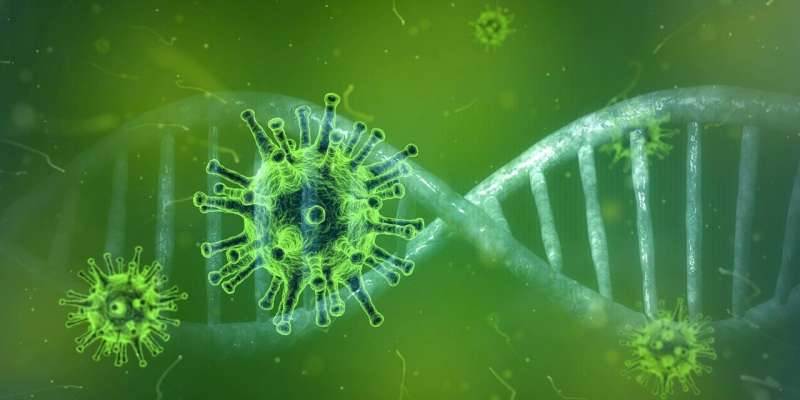Artificial intelligence has made a groundbreaking discovery, revealing the astonishing diversity of the viral world. Researchers have uncovered more than 160,000 new species of RNA viruses, shedding light on the hidden virosphere that exists all around us, from the atmosphere to extreme environments. This study, the largest of its kind, offers a remarkable window into the fundamental branch of life on Earth and suggests there are millions more viruses yet to be discovered.

Unveiling the Vast RNA Virus Diversity
The study, published in the prestigious journal Cell, was conducted by an international team of researchers and represents a significant milestone in our understanding of the viral landscape. Using a deep learning algorithm called LucaProt, the researchers were able to analyze vast amounts of genetic sequence data, including lengthy virus genomes, to identify an astounding 161,979 new species of RNA viruses.
Professor Edwards Holmes, the senior author of the study from the University of Sydney, eloquently stated, “We have been offered a window into an otherwise hidden part of life on earth, revealing remarkable biodiversity.” This discovery not only expands our knowledge of the viruses that exist around us but also opens up a world of further exploration, as the researchers believe there are millions more viruses yet to be characterized.
Harnessing AI to Unravel the “Dark Matter” of Viruses
The key to this remarkable discovery was the use of artificial intelligence. The researchers built a deep learning algorithm, LucaProt, that was able to compute vast troves of genetic sequence data, including lengthy virus genomes and complex information, to identify these previously unknown viruses.
As Professor Holmes explained, “The vast majority of these viruses had been sequenced already and were on public databases, but they were so divergent that no one knew what they were. They comprise what is often referred to as sequence ‘dark matter.’ Our AI method was able to organize and categorize all this disparate information, shedding light on the meaning of this dark matter for the first time.”
This AI-powered approach allowed the researchers to significantly accelerate the process of virus discovery, which would have been time-intensive using traditional methods. The tool’s exceptional sensitivity and specificity enabled the team to delve much deeper into viral diversity, setting the stage for further exploration.
Implications for Ecosystem Understanding and Virus Identification
The discovery of these new RNA viruses has far-reaching implications. Although RNA viruses are commonly associated with human disease, the researchers found them thriving in extreme environments around the world, including the atmosphere, hot springs, and hydrothermal vents. This suggests that viruses may play key roles in global ecosystems, and understanding their diversity could provide valuable insights into the overall functioning of life on Earth.
Professor Holmes emphasized the significance of these findings, stating, “That extreme environments carry so many types of viruses is just another example of their phenomenal diversity and tenacity to live in the harshest settings, potentially giving us clues on how viruses and other elemental life-forms came to be.”
Moreover, the researchers believe that the AI-driven approach used in this study can be applied to identify not only more viruses but also other forms of life, such as bacteria and parasites. This could vastly improve the mapping of the Earth’s biodiversity and aid in the identification of potential threats to human and environmental health.
